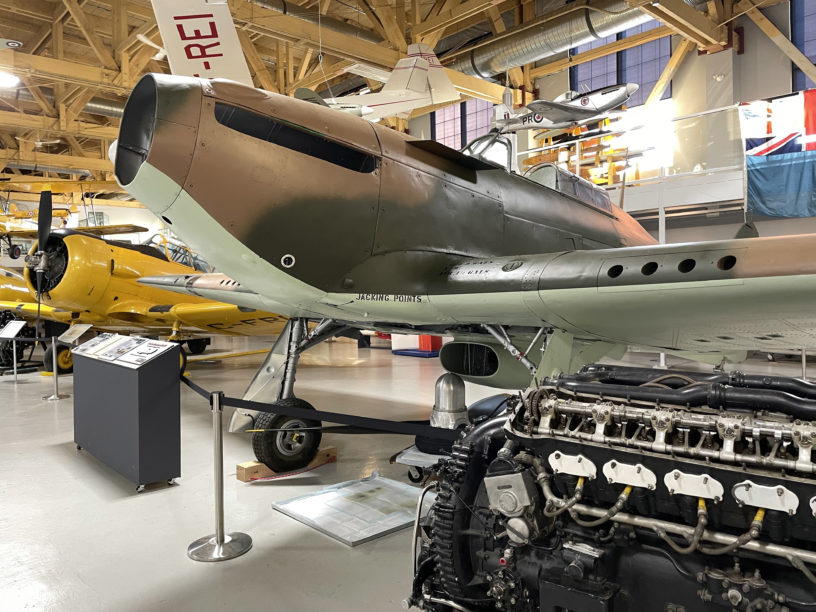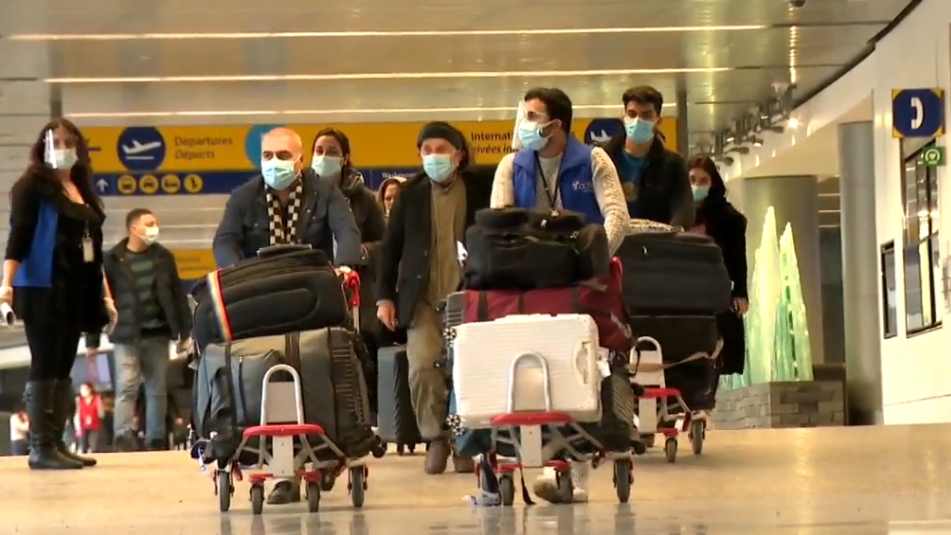Many Calgarians say with sheepish pride that their home is just a big small town. But the longest runway in Canada, opened in 2014, is at Calgary International Airport.
“You would be able to land a space shuttle on this thing,” boasted mayor Naheed Nenshi of the 14,000-foot runway 17L/35R. He may be right; the landing strip at the Kennedy Space Center is not much longer, just an extra thousand feet. Two years later, a new international terminal doubled the space at Calgary International, leaving the airport authority 2.3 billion dollars in debt.
Impressive as all that may be, YYC is a blandly functional, forgettable space, outsized, like so much in our city. Houses here are cheaper and larger than in other major cities in Canada, and massive trucks occupy our broad-shouldered roads. The scale of the landscape may be to blame; the built environment of the city lacks the drama of its own setting, with magenta mornings, sunsets that flare orange, red and pink, and mountains that cleave the plains. Sometimes a Chinook arch forms as water vapor from the Pacific Ocean rises over the Rocky Mountains, settling as cloud above Calgary and the surrounding foothills, like a giant duvet tossed overhead.
Chinooks bring relief from the cold, but for a lot of people with migraines, like me, they’re a nightmare. The sudden shift in air pressure causes our heads to feel like they might burst with throbbing pain. Calgary still clings to its past as a frontier town; cowboy boots are earnestly worn here, and the rodeo, known as the Stampede, is the marquee annual event. Even so, the Chinooks find some of us Calgarians stranded helplessly in bed.
The rough climate ensures that whatever the season, there will likely be havoc at the airport. From November through March, planes queue on the runway to be de-iced by machines with spectral arms that release white chemical plumes into the frigid air. On the hottest summer days, thunderstorms can send hail the size of apricots rocketing out of the sky. The local airline, WestJet, has learned to shield the delicate mechanisms on its airplanes’ wings with puck board, the stuff that you ordinarily see lining the sides of ice hockey rinks to protect spectators from slapshots.
When COVID-19 shut borders in early 2020, I flew back to Calgary after many years working overseas, ambivalent about returning to a place that was no longer really home. Now I was estranged from the once-familiar airport—or any airport anywhere. In August 2021, images of air travel suddenly returned to my social media feeds, but they were scenes of chaos and panic at Kabul airport as the Taliban took over Afghanistan.
Canadian media covered the story for weeks even though, or because, we were in the middle of an election season that had been failing to rouse voters from their pandemic ennui. The prime minister promised to bring 20,000 Afghans to safety; after his party won re-election, he doubled the number to 40,000. Like other Western countries making similar commitments, this gesture distracted attention from our abysmal failure in Afghanistan. After the September 11, 2001 attacks, Canada had joined other NATO countries and sent troops, blinded by delusions of exporting peace, order and good government.
The Canadian public was largely on board with the resettlement of Afghan refugees. But other government policies, like indefinite immigration detention, underscore a very different reality. Before the Taliban resumed power, Canada had accepted fewer than 10,000 Afghans for resettlement over the previous six years and it was difficult for Afghans to make it here on their own: only 500 to 650 Afghans claimed asylum most years. Canada is hard to reach from most parts of the world, and that’s obviously one reason for the low number of Afghan asylum seekers. But underlying our superficial embrace of resettlement is an uncomfortable truth: refugees are not really welcome unless the government invites them here.
At the end of August, the airlifts from Kabul stopped. Of the more than 100,000 Afghans evacuated by the United States, 5,000 would eventually be transferred to Canada, and the government selected Calgary as their first port of call. At the airport, journalists took photos of families in the unprepossessing, low-ceilinged arrival hall, its brown tiles and luggage carousels unchanged despite the recent upgrades. Some of the refugees would stay in Calgary, others would settle in cities and towns as far removed from Afghanistan as anywhere could be—such as Thunder Bay, Ontario, population 110,172, a former fur trading post on the shores of Lake Superior.
The first place most Afghan refugees call home in Calgary is a hotel on Barlow Trail, which is named after Noel Barlow, one of the city’s early aviation enthusiasts. Calgary has had an airport for more than a century; from 1956 until 1977, when the modern terminal was built, the airport was known as McCall Field, after Fred McCall, a fighter pilot in the First World War. He was a co-founder of the Calgary Flying Club in the late 1920s, where Barlow learned to fly in the inter-war years. The club and others like it across the country was set up thanks to incentives—free airplanes, subsidies for earning a pilot’s license—provided by a Department of National Defense anxious to ensure that there would be enough pilots to call up in the event of another war.
Barlow spent WWII in the United Kingdom, where he maintained the aircraft of Douglas Bader, a double amputee who fought in the Battle of Britain. Back in Canada, recruits from New Zealand, Australia and other outposts were trained on the airfields around Calgary.
 photo courtesy of the author
photo courtesy of the authorA few weeks ago I visited the Hangar Flight Museum on the southern edge of the airport. It was mid-afternoon and the sky was empty, blue and still. The museum recounts a compressed, unfussy narrative about war. There are scale models of flight training schools, moldering kit in plexiglass cases, and placards that describe Canada as the “aerodrome of democracy,” amid silent, shiny planes that look like toys, not machines that deliver death from the air.
In early October 2021 I wrote to an editor I knew at one of the national papers and pitched a story.
By that time, some two hundred or so refugees had arrived, and Calgary’s lead resettlement agency arranged for me to meet some of them. I drove to a new neighborhood on the eastern flank of the airport. I’d never been there before, but it could have been anywhere in the city, with strip malls marooned in oceanic parking lots, curvilinear streets of pastel houses, and spindly trees. This suburban homogeneity, houses upon houses, each in its own tidy yard, is what the Afghan families would have seen as their plane banked in the air.
The small home I entered was overflowing with life. Azatullah and his twelve relatives had just moved in. They had brought almost nothing with them in the rush to leave Kabul. There were three bedrooms upstairs, one on the main floor, and a basement from which a scrum of teenage boys emerged soon after I arrived. I sat on a blue chenille couch in the living room, Azatullah kneeled on the carpet, and some of the older relatives gathered round.
As he made introductions I sketched the family tree, noting the branches broken and scattered across the world. One of Azatullah’s brothers, now dead, had worked for the Canadian embassy, but the family had known nothing about Canada before they’d arrived, except that it was cold. It’s an easy place to live, they told me. Calgary was a bit like Kabul; both cities have a horizon shaped like a serrated edge. There was even an Afghan grocer nearby who sold the dried mulberries, each one a springy, sour bite, that had been offered to me alongside a glass of milky spiced tea. “We’re safe, but our hearts are not here,” Azatullah told me. “We worry about relatives left behind.”
He was grateful to Canada, he explained, even if the house was a bit small. In Kabul, they’d had a compound to themselves. I took photos of the family in the backyard. There were leaves on the ground, a chill in the air; I was surprised to see they wore sandals. “It’s cold back home too,” Azatullah said.






